
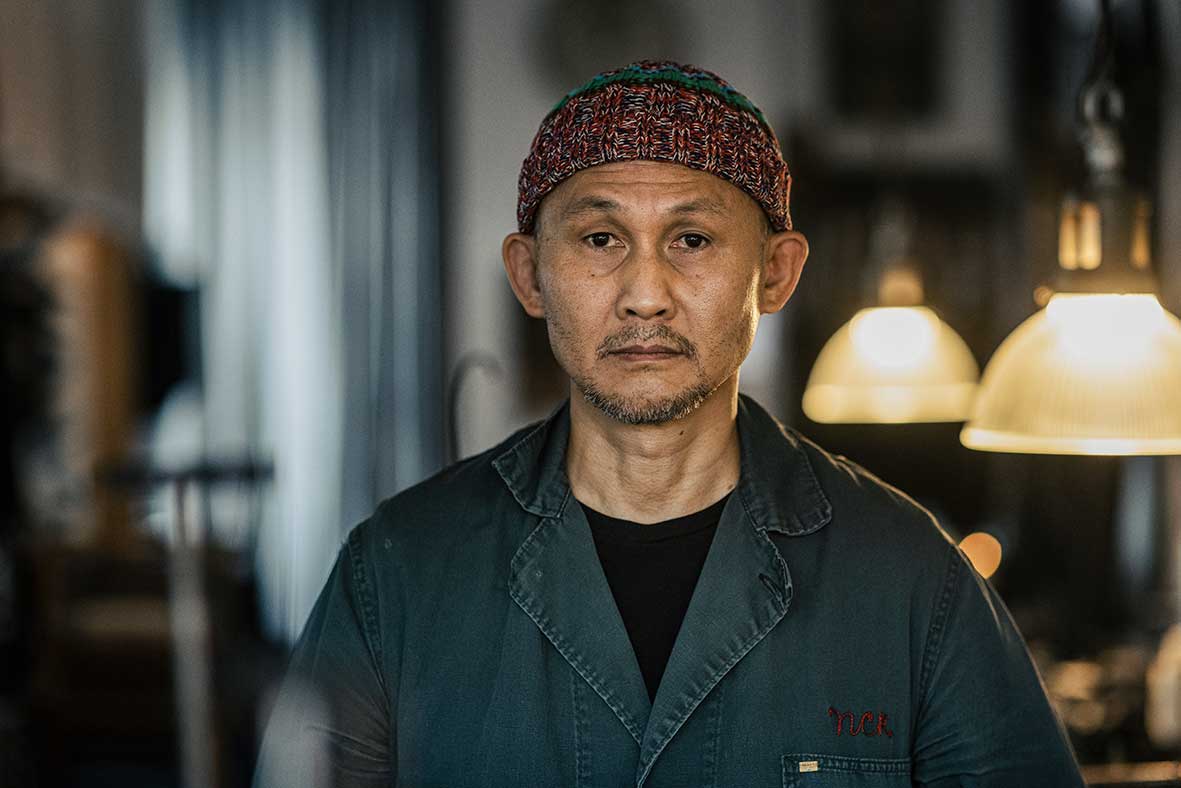
Practice makes imperfect | Brooklyn
Bed-stuy, Brooklyn, New York
American style and Japanese meticulousness merge at Bowery Blue Makers. Customers from all over the world keep Takayuchi Echigoya busy making jeans in his Brooklyn studio. His process involves archeology and the quest for the perfect imperfections.
Words by Mattias Lundblad | Photos by Charlie Bennet
Time appears different as we enter the golden light of a third floor loft behind a non-descript gate in Bedford Stuvyesant in Brooklyn, New York. Bowery Blue Makers is a studio of around five hundred square feet, filled with old and new denim fabric, and antique sewing machines. Here, Takayuki Echigoya, known as Echan, makes jeans by historical methods, each part of the process by hand.
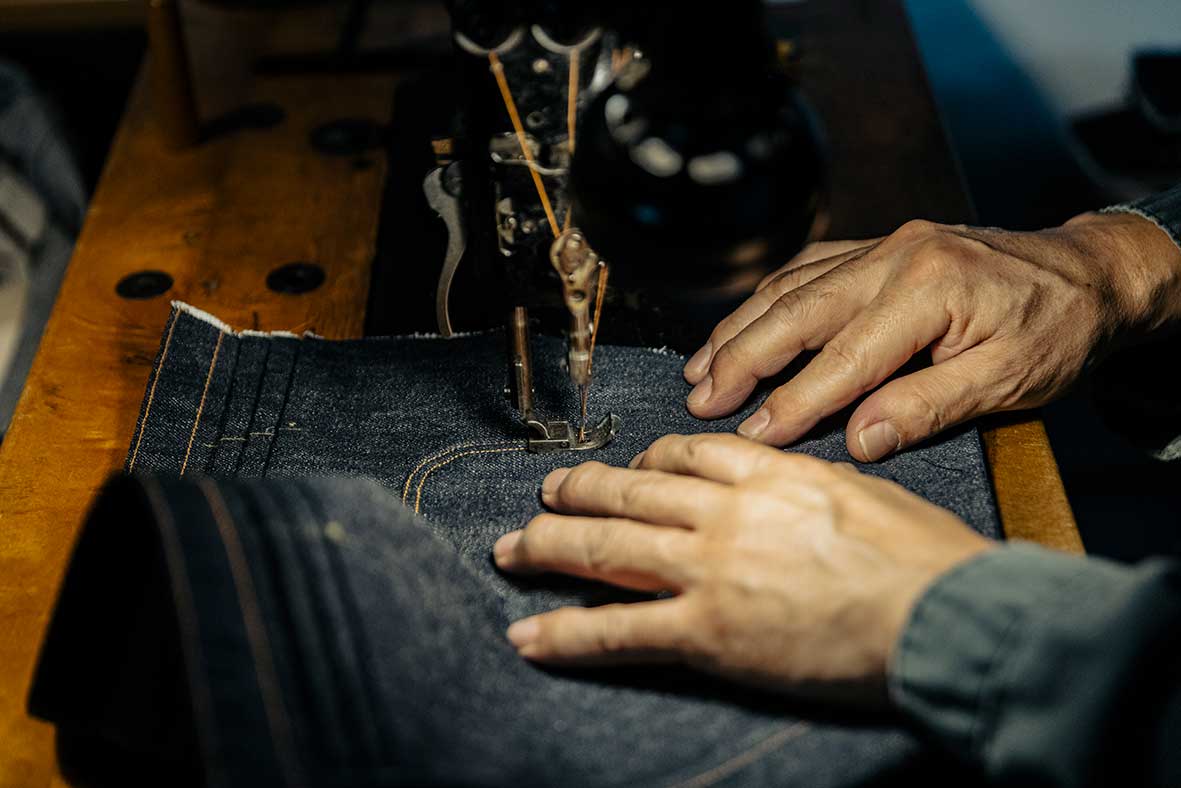
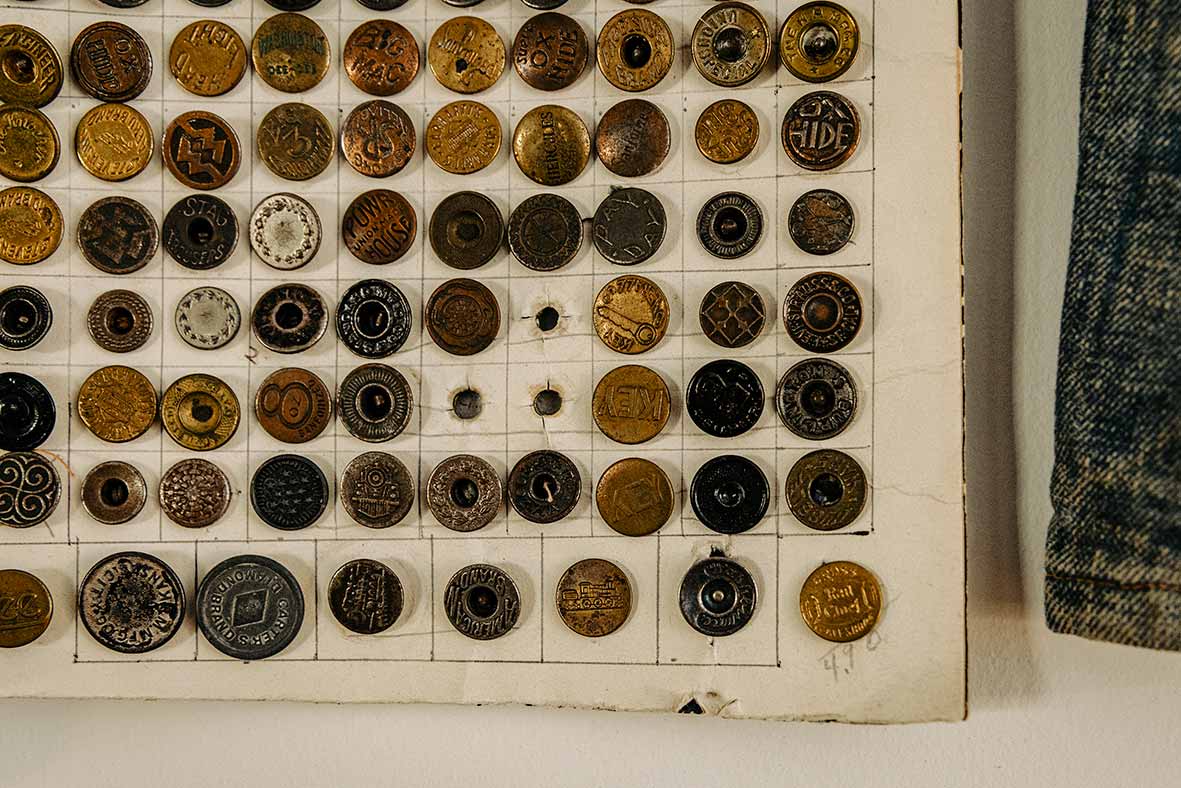
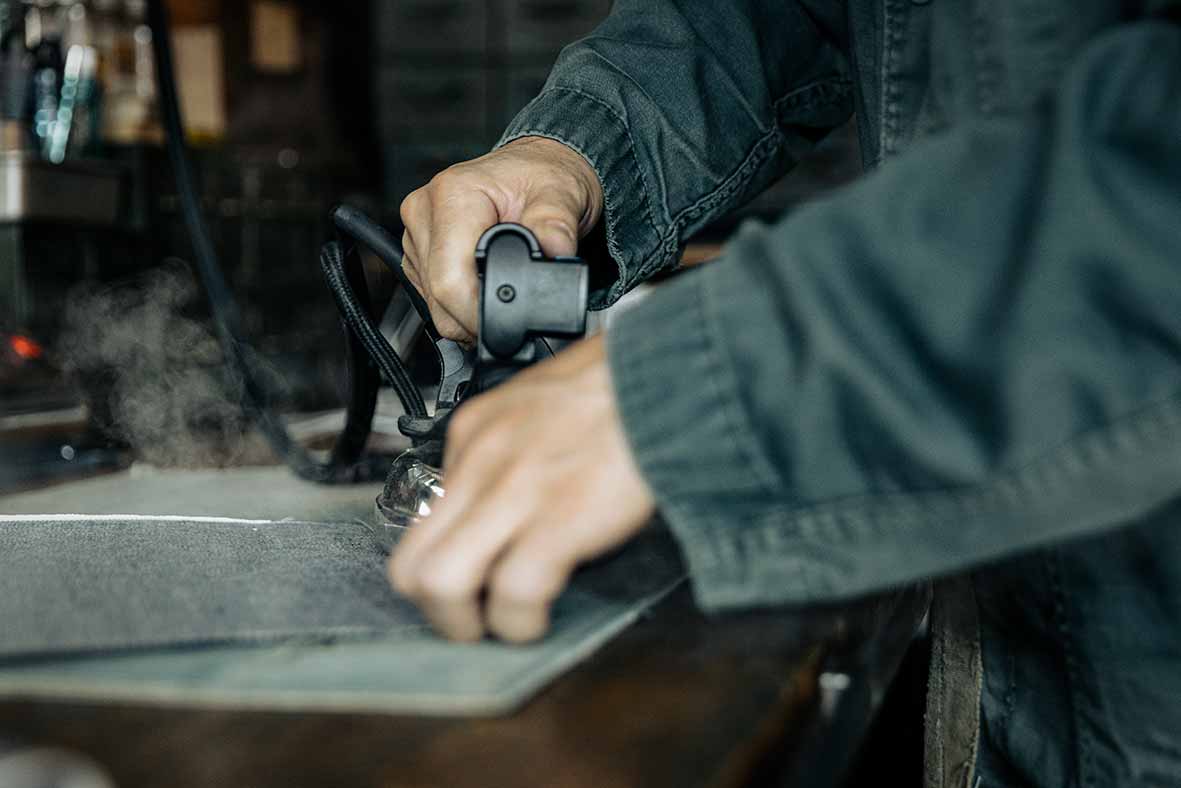
“The entire room is full of still lifes,” says Charlie, the photographer. Echan himself stands by his cutting table, cutting out parts of jeans with his iron scissors from a large roll. The hissing of the steam iron blends with Lionel Hampton’s vibraphone from a laptop. Each pair of jeans consists of fifteen parts, plus the belt loops, and one pair is usually what can be made in a day. The order book is so full, that Echan has closed his web shop for the next five months. That time also includes some time to recharge in Thailand and his native Japan. He calls himself a denim artist, not a craftsman.
“A craftsman or an artisan repeats the same work to create perfect beauty. I use unstable old sewing machines and shrinking denim to make imperfections. It’s kind of experimental, I can’t make the same thing again. Their beauty is in the imperfections, just like with vintage clothes. I also like imperfections in humans,” says Echan.
His jeans are all individuals, and the imperfection that comes with the ancient technique become personal traits. “Older denim shrinks more than modern. I ask my weaver to imitate it. It shrinks ten percent one way, four or five the other. It’s a lot – four to five inches, but it depends on how you wash them. It doesn’t shrink as much unless you tumble dry them.”
Most customers are experienced and know this. Once a month a fitting appointment is offered, which many travel far for. “Last time it was someone from South America. Sometimes they come from Hong Kong or Japan. Sometimes Europe. If they know of me, they love denim.”
625 million button holes
Almost all his sewing machines are made by Singer, a proud New York brand. One exception is a button hole machine, with the ticker showing that more than 625 million button holes have been made on it. The machine was once so expensive that it was rented rather than bought, and paid for by how much it was used. A hemming machine making rope-like seams is another exception from the Singer rule. Echan scoffs a little at it, at the fact it comes from Chicago, and at how popular it is.
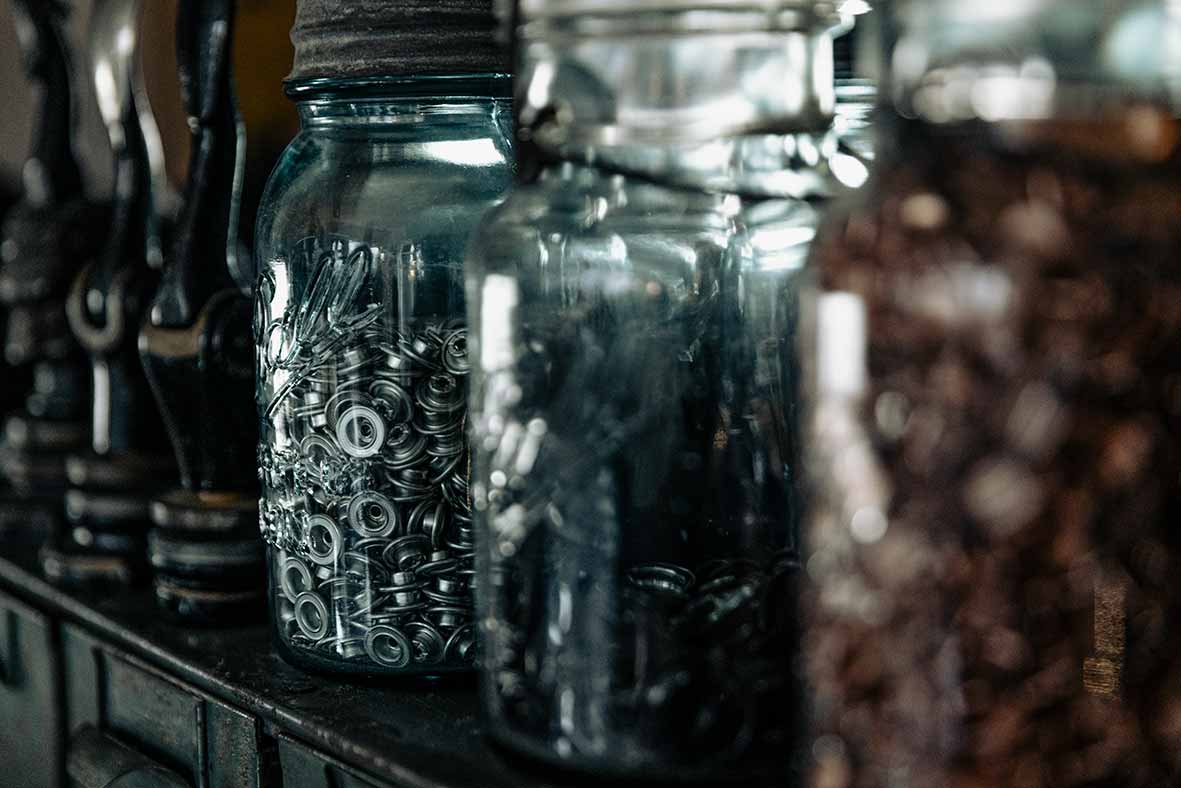
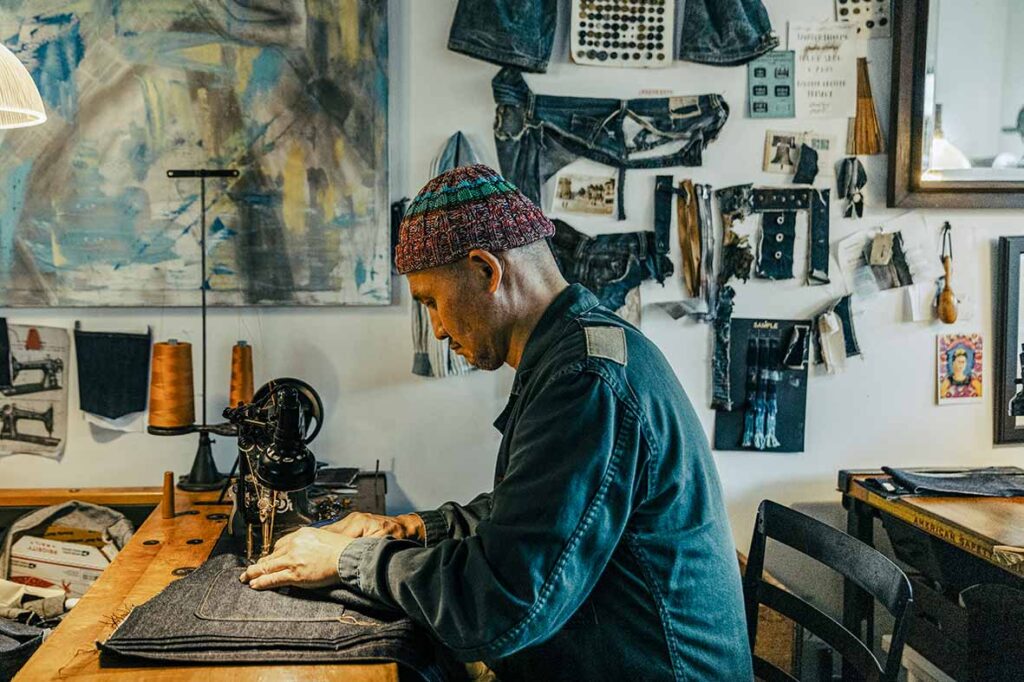
“Singer were pioneers and have the best design. I love to use them. Most people like to use ugly Union Specials. I don’t know why.”
He finds it symbolic that the day Singer was registered as a trademark in New York, June 8 1875, and his birthday are 90 years apart to the day. The development of jeans and sewing machines have gone hand in hand. His ideal is Levi’s earliest 501 models, especially pre-1900. The model that started it all among workers in America’s mines, railroads and factories, and an important symbol for the US emerging as an industrial nation. It is therefore a bit ironic that Echan is unable to find anyone in the country to weave his denim. Instead, American cotton is made into thread, then shipped to Japan to a small mill in Okayama, the denim center of Japan. The weaver he used to work with, Tomoki Kiyama also worked alone and in the same spirit, until his recent death. “He used the oldest loom in Japan, and had a career of over 60 years. I was worried when he died, but his family has taken over the mill,” says Echan.
The fabric is shipped back to New York, 50 rolls at a time, enough to make 1200 pairs of jeans. There are two shades and three weights – 12, 13 and 14 ounces. Each pair of jeans go through eight to ten sewing machines. Then there are the very oldest models, which are made on the early Singer model no. 2. According to Echan’s research the foot operated machine must have been used during Levi’s first decade, since the factory was steam powered from 1886. At this time the models had no numbers, but were known as Waist Overalls. He shows a pair he has made on the machine. The crotch has to be made in a different manner, as the machine cannot handle the thickness where more than two layers of fabric meet. The edges are frayed, as they are sewn like before the overlock machine was invented. The more demanding method makes it so it takes two to three days to make a pair of jeans, at a cost of 1800 dollars, compared to the more common models at between 500 and 750.
Japan vs New York
Echan grew up in Wakkanai, a coastal city of 35 000 in northern Japan. His father was a fisherman and his -mother a home maker. There was no sewing tradition in the family, but Echan’s career began in vintage clothing shops in Tokyo and Sapporo. In 1996 he moved to New York for the first time, to start a fashion brand on Manhattan’s Lower East Side. He returned to Japan after some time, and brought his brand with him. He focused more and more on denim, learned to sew it, and started collecting old sewing machines. “I got tired of chasing fashion. I gave up because keeping up with trends and throwing away ideas became painful.”
Life in Japan didn’t fit him as well anymore. He felt he had more in common with people in New York, and 2014 he returned with his sewing machines to found Bowery Blue Makers. Echan is now 56 years old, but something about the enthusiasm for his work makes him seem much younger. He keeps a strict schedule and sews every day. The work day starts at 9:30 am, and ends at 6:45 pm. His studio is also his home.
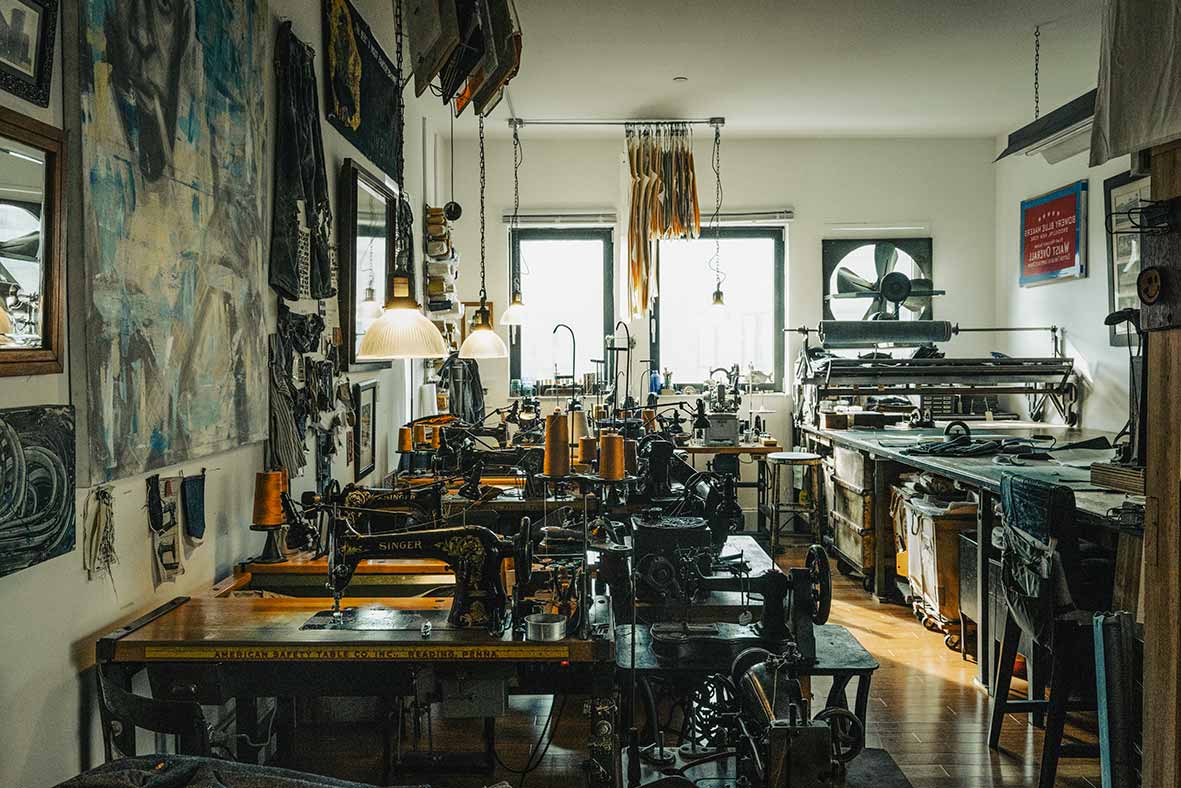
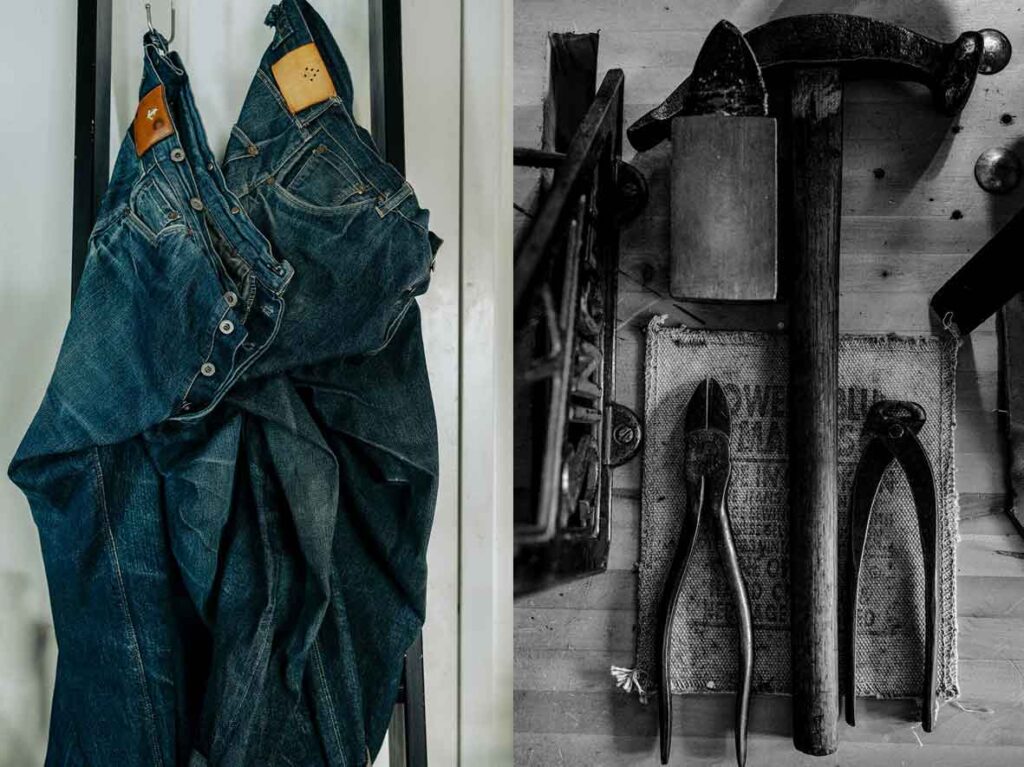
“I’m addicted to my work, but it’s also kind of a hobby, so it’s no problem at all. Winter vacation is helpful, because then I’m in the warmth of Bangkok and Japan for two to three months at a time.”
Part of his work is finding historical sewing machines, clothes and fabrics. A lot can be found on auctions online, but sometimes Echan travels in the US on treasure hunts. His cutting table, dated 1953, and several of the sewing machines come from a finding in an old closed factory in Pennsylvania. “I found it on Craigslist. They were selling something else, but I saw the sewing machines in the background in the pictures,” he says.
“It’s usually not that simple,” his friend Justin Gordon adds. He is an antique dealer visiting from Massachusetts, partly to help with the language, partly to plan another treasure hunt in Pennsylvania.”
Disassembling old jeans
Copper rivets, pieces of fabric, seams, and parts of ancient jeans hang on the walls like samples of the smallest elements of jeans making. A crucial part of Echan’s artistic process is disassembling old jeans, to study and date each detail, and to see and feel the fabrics. That way he can recreate them with authenticity on his old machines. He collaborates with Brit Eaton, a denim hunter known as Indiana Jeans, who spends ten months a year on the road searching for denim in barns, attics and mines dating back to the gold rush.
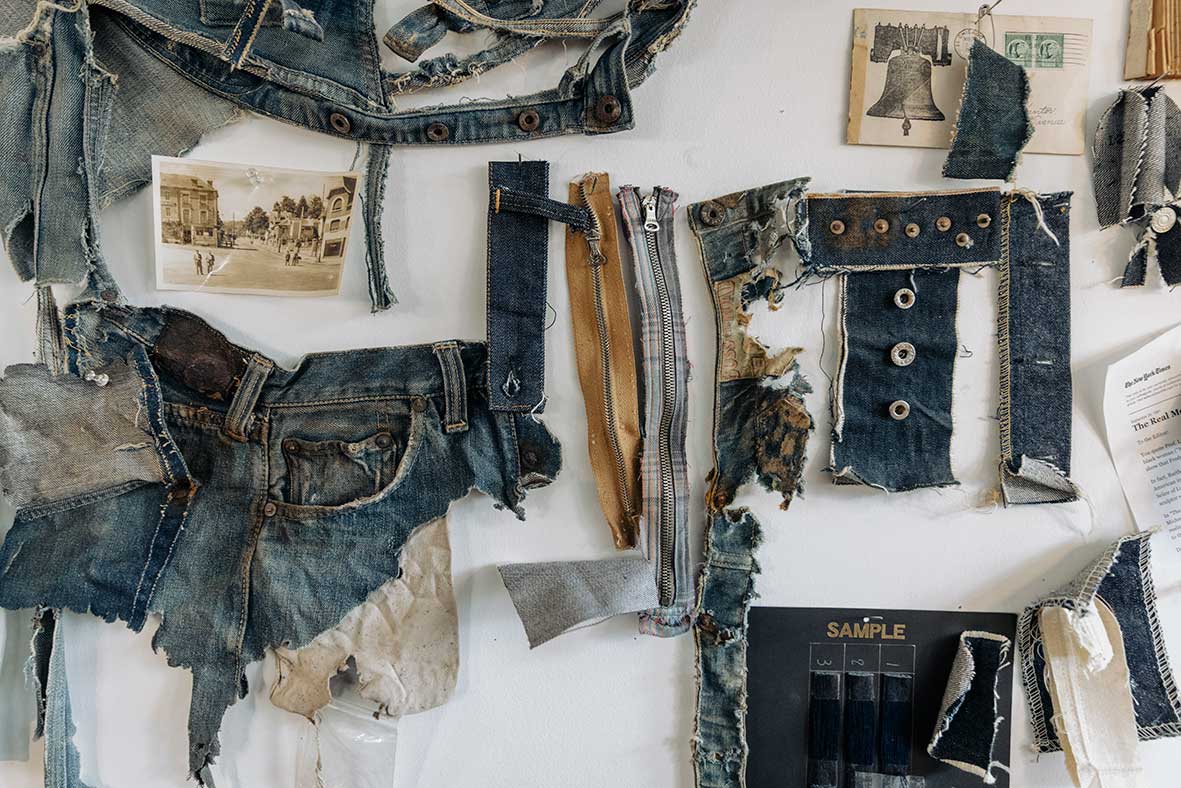

Echan pulls out a cardboard box from Brit Eaton. In it is a yellowish brown canvas fabric waiting to be transformed into clothing. The fabric has small wax stains all over it. Echan explains by showing a photograph of miners with candles in their hands. “The fabric comes from a gold or silver mine in Colorado. They had no electricity, so the miners used candles to find their way.”
A recent project has resulted in jackets from fabric hand painted by American soldiers in the Second World War. An advertisement banner for Blue Bell Wrangler from the 1950s has been transformed into a jacket. “A banner like that usually goes for 1500 to 2000 dollars,” says Echan, cracking a big smile. “I cut them, and give them a new life.”







